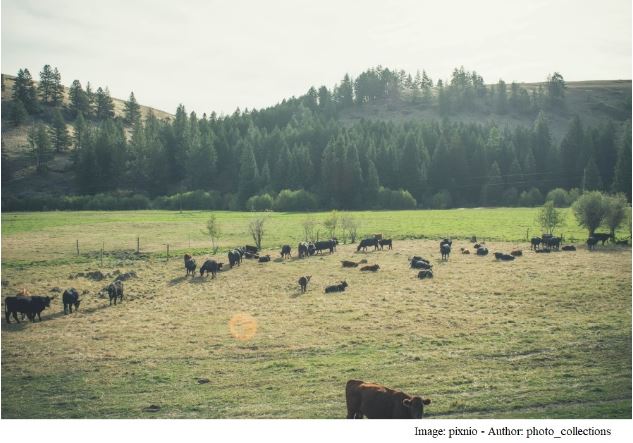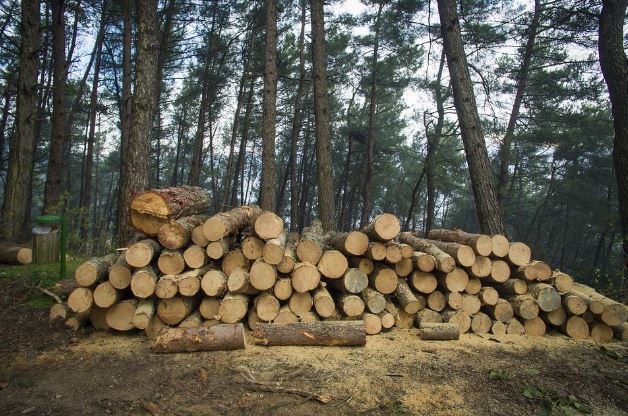
In the recent past, we have observed how our shift towards an ethical treatment of animals has created a positive impact on animals, ourselves, and the environment.
Animal farms leave a very large environmental footprint. Thus, adopting a plant-based vegan diet has become a sensible & prudent choice.
However, it’s worth noting that animal agriculture is not the only perpetrator here. The fashion industry is not too far from being responsible for harming animals and the much-cherished environment.
It’s really encouraging though to know that many people have started embracing veganism with their diet and fashion choices. Let’s discuss the impact of vegan fashion on the environment and what changes it will bring to our future.
What is Vegan Fashion?
While veganism means adopting a lifestyle that imposes no harm on animals, vegan fashion includes clothing and accessories made using products that are not derived from animals.
Further, it goes without saying, the end products of vegan fashion (e.g. cosmetics) are not to be tested on animals. While vegan fashion has an emphasis on safeguarding animal rights, eco-friendly/sustainable fashion is more focused on the environment.
Why Care About Vegan Fashion?
We believe it’s important to reflect upon our lifestyle choices and critically evaluate their impact from an ethical and ecological standpoint. It’s worth noting that the term veganism is quoted many times in the context of safeguarding animals, saving our environment and its resources for future use for good reasons.
The ecological disasters that are happening around us are interconnected to one another. Issues like deforestation, soil erosion, global warming, harm to aquatic life, and other similar calamities could be directly or indirectly influenced by our fashion choices.
Thus considering vegan, eco-friendly, and sustainable fashion would certainly be a move in the right direction not only to keep our environment healthy but also to promote healthy living!
Impact of The Fashion Industry on The Environment
Ocean Pollution
Have you ever been aware of the scale of water pollution our regular non-sustainable clothes cause to the environment? It’s worth noting that the fashion industry is accountable for 20% of all industrial wastewater pollution worldwide! [1]
The aquatic life suffers as washing the garments made of synthetic materials releases toxic substances into our waterways. That means plants and marine animals could consume these toxins leading to biomagnification.
When there is untreated toxic wastewater from textile manufacturers dumped straight into the rivers, the fabric polyester does not easily break down and stays in the ocean. When it comes to natural fibers like hemp, linen, and cotton, 70% of these fabric products are made of organic materials. Using such eco-friendly fabrics which do not include dangerous chemicals would also reduce ocean pollution.
The most sustainable & eco-friendly way to wear cotton is, in its recycled form, which will not harm your skin as well. Another cause for pollution is the washing of regular clothes which tends to release microfibers every year into the ocean. Apparently, it is the equivalent of 50 billion plastic bottles.
Again a solution to this issue can be using fibers made of organic materials which are easily biodegradable that can have a low impact when washing.
Air Pollution
The world of fashion can be exciting & glamorous, but as unfortunate as it may sound, the quality of the air we breathe is declining due to its effects. It’s no secret that the fashion industry is accountable for 2 to 8 percent of the global carbon emissions [2]. That is more emissions than all maritime shipping combined and international flights.
This can certainly be a cause for global warming, leading to excessive temperature rises, which in turn can interrupt the ecological balance. A significant amount of greenhouse gas emissions are caused during textile material production.
Synthetic fibers are found in 60% of apparel [3], and polyester is one of those synthetic fibers and a plastic. Producing polyester releases more carbon emissions than cotton [4]. On the other hand, switching to vegan, eco-friendly & sustainable fabrics can be a more sensible & prudent option to consider, where the carbon footprint is expected to be much lower than that of polyester.
High Consumption of Water
Water is fundamental to all living creatures. After agriculture, the garment and textile industry is one of the most water-intensive industries in the world [5]. On the other hand, more eco-friendly & sustainable options to consider would be wearing recycled cotton, opting for organically made fabrics such as hemp & linen, and using biodegradable Tencel.
Recycled cotton uses a very low amount of water to produce compared to traditional cotton [6] [7]. Hemp & linen plants require only a minimal amount of water to grow. Tencel which is derived from plant material is biodegradable and production requires only a 3rd of the water consumed to produce rayon comparatively.
Soil Degradation
Soil degradation is the deteriorating process of physical, biological, and chemical composition of soil. The adverse effects of this process could mean declining soil fertility, soil erosion, parched land, drought & aridity (long-term effects), loss of arable land, and increased flooding.
Cashmere goats and sheep nurtured for their wool heavily depend on pasture, and their overgrazing can be detrimental to the soil. Further substantial use of water & chemicals to grow cotton would not do any favors to the land either.
Deforestation
Even by 2020 the fashion industry heavily relies on trees to produce textile fibers making deforestation part of the supply chain. There are many textile materials made with cellulose taken from tree pulp.
Such tree-based fibers include viscose, modal, and lyocell. These can be found in our shirts, pants, sports tops, leggings, and maxi dresses.
Thus the environmental consequences of fast fashion, high-end brands, and the fashion industry in general with negligent material sourcing, and high water consumption can not be ignored.
Vegan Fashion: A Step in the Right Direction?
Some perceive veganism as the “new green,” and it seems sensible to opt for veganism as a way to live an ethical and sustainable lifestyle.
What’s apparent is that vegan & sustainable fashion is less polluting and demands fewer natural resources such as fossil fuels, water, animals (zero demand for leather, wool, down, and silk), trees, and land.
As the world population is expected to grow continuously, a rapid global movement towards vegan & sustainable fashion is an effective way to reduce our impact on the environment.
How to Choose Vegan & Eco-friendly Fashion?
When you make informed purchasing decisions about clothing, including beauty products, based on ethical and sustainable sourcing & production, it allows you to lead a vegan and sustainable lifestyle. Encourage you to check a few tips we have shared below to pursue vegan & sustainable fashion:
- Opt for eco-friendly garments and accessories, while buying products online or at a store, and look for information about the materials used for clothing and beauty products. Brands claiming to make ethical & sustainable products may mention the types of raw materials used during manufacturing.
- Clothing manufacturers also use recycled and upcycled materials, such as recycled cotton. Using clothes through recycling, upcycling, or reusing is a great way to save our resources and contribute towards ecological balance.
- Make sure to choose ethical vegan fashion brands that use materials not derived from animals e.g. recycled cotton, hemp, linen, and biodegradable Tencel.
How Vegan Leather is More Eco-Friendly
Leather production is another contaminating process and it’s responsible for having a negative influence on our environment.
Alternatively, “vegan leather” is more sustainable and eco-friendly. Vegan leather can be made from plant-based fibers, including corn, pineapple leaves, cactus, cork, coconut, and apple peels. Since sustainable vegan leather is made up of plants (that can be easily reproduced) and bi-products of the food industry, they do not require resources as much as traditional leather.
There are various types of vegan leather products in the market, people find with excitement, such as vegan bags, vegan belts, vegan boots, and other vegan shoes.
Last Thoughts
As the population and demand for resources grow, we all have a personal responsibility to do our utmost to champion ethics & sustainability to preserve the environment. To reduce the negative impact, protect the world’s natural resources, and live an environmentally conscious life, we encourage you to thoughtfully consider vegan & sustainable fashion!
Few things we hope you can do:
Comment: if you need any help, have questions, or would like to share your thoughts, please leave a comment below. Your feedback inspires us and we would reply as soon as possible.
Share: “sharing is caring”, if you found this article to be useful, please share it by using social buttons on the left or bottom.
Subscribe: subscribe to our free newsletter and receive updates on latest articles, vegan news, recipes, health, and much more!
Follow: connect with us socially on Facebook (like), Pinterest (follow), Twitter (follow), or Instagram (follow)
Recommended Posts:
- 6 Convincing Reasons to Be Vegan
- Documentaries for Environment & Species Extinction
- Top 10 Causes of Deforestation
- 10 Effects of Overfishing
Recommended External Reading:
References:
1. https://www.wri.org/insights/apparel-industrys-environmental-impact-6-graphics
2. https://www.unep.org/news-and-stories/story/putting-brakes-fast-fashion
3. https://www.unep.org/news-and-stories/story/fashions-tiny-hidden-secret
4. https://www.wri.org/insights/apparel-industrys-environmental-impact-6-graphics
5. https://www.epa.gov/sustainability/lean-water-toolkit-chapter-2
6. https://www.climateaction.org/news/levis_jeans_to_make_all_its_products_from_100_recycled_cotton
7. https://www.ncbi.nlm.nih.gov/pmc/articles/PMC1964887/
Image credit: Henry Jose / flicker (CC BY 2.0)












 Although much criticism regarding the drivers of deforestation is focused on activities such as logging and commercial agriculture, such large-scale activities have been made possible only through infrastructure such as roads, railways & bridges for transportation, supply of energy, and irrigation.
Although much criticism regarding the drivers of deforestation is focused on activities such as logging and commercial agriculture, such large-scale activities have been made possible only through infrastructure such as roads, railways & bridges for transportation, supply of energy, and irrigation. 

